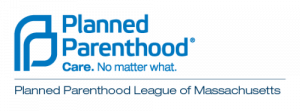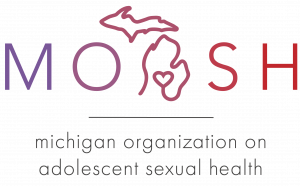Sexually Explicit Media (SEM) is one way through which youth are learning about sexuality. Using the lens of media literacy education, this interactive, one-day training will provide educators, youth workers, and professionals with an opportunity to explore how pornography can play a role in young people's sexual development and sexuality, their awareness of gender and gender stereotypes, consent, sexual behavior, bodies and body image, healthy and unhealthy relationships, and sexual identity. Participants will learn strategies to teach critical thinking skills about media literacy, how to discuss SEM with young people, and leave with activities to utilize in the classroom. Registration link here.
Training Hub
The Sex Education Collaborative Training Hub lists trainings for sex educators, facilitators, and other professionals on best practices for sharing important information with clients and the public. From teaching anatomy inclusively to effectively addressing bias in the classroom to addressing racial justice and equity in sex education, the Training Hub includes trainings, technical assistance, and policy support from state, regional, and national leaders in the field of sex education.
Please note: The Training Hub includes both in-person and online professional trainings. If you see a training you are interested in and it isn’t listed as virtual, please reach out directly to any of our members to find out what's possible!
Trainings Offered by State-Based and National Organizations
Displaying results 1 - 5 of 154Examining Sexually Explicit Media: Tools for Conversations with Youth
- Indicator 2 (K-12): Describe three impacts that conscious and unconscious bias could have on cross-cultural interactions when teaching sex education.
- Indicator 1 (K-12): Demonstrate three techniques to create an inclusive and affirming learning environment. (S)
- Indicator 3 (K-12): Describe three elements of a trauma-informed approach to sex education.
- Indicator 4 (K-12): Demonstrate three strategies of a trauma-informed approach to sex education (e.g. giving trigger warnings before content on sexual assault and allowing students the right to pass as appropriate, etc.). (S)
- Indicator 1 (K-12): Describe the importance of teachers’ maintaining professional boundaries when teaching sex education.
- Indicator 2 (K-12): List three factors to consider regarding personal disclosure when teaching sex education
- Indicator 1 (K-12): Demonstrate the ability to build rapport with students. (S)
- Indicator 2 (K-12): Demonstrate three student-centered instructional approaches that support a variety of learning styles. (S)
- Indicator 3 (K-12): Explain the differences between positive vs. shaming approaches to teaching sex education.
- Indicator 5 (K-12): Describe three effective strategies for practicing skills with students.
- Indicator 1 (K-12): Describe three distinguishing characteristics between healthy and unhealthy relationships, involving family, friends, and/or romantic partners.
- Indicator 2 (K-12): Explain three ways that healthy relationships can positively impact personal well-being.
- Indicator 3 (K-12): Describe three strategies for teaching students communication skills.
- Indicator 4 (K-12): Describe three strategies for incorporating the positive and negative impacts of communicating through technology into lessons on healthy relationships.
- Indicator 5 (K-12): Describe three ways to help students set and respect personal boundaries in relationships.
- Indicator 8 (K-12): Explain why it is essential to include positive portrayals of LGBQ+ people in lessons.
- Indicator 1 (K-12): Explain three reasons why it is important to respond to every question students ask when teaching sex education.
- Indicator 2 (K-12): Demonstrate the ability to effectively respond to three different types of challenging questions. (S)
- Indicator 1 (K-12): Describe three health (e.g. physical, social and/or emotional) and/or academic benefits of sex education for young people
- Indicator 1 (K-12): Explain the differences between personal and universal values relating to sexuality.
- Indicator 2 (K-12): Describe how verbal and nonverbal expression of personal values, and comfort with topics related to sex education, could impact one’s teaching
- Indicator 3 (K-12): Explain the importance of educators refraining from sharing their personal values when implementing sex education.
- Indicator 4 (K-12): Demonstrate the ability to respond effectively to students’ values-based comments and questions. (S)
Inclusive Sex Education for Expectant and Parenting Youth
Although expectant and parenting youth (EPY) express a need for sex education (contraception, healthy relationships, etc.), many programs are not adequately inclusive of EPY. This interactive training will help educators and service providers recognize the need for EPY inclusivity and support in pregnancy prevention programming and provide concrete strategies for implementation. We will discuss our experiences working with EPY from across the state and how their feedback helped us to develop a toolkit of strategies for adults working with EPY to ensure they’re being effective and affirming. We will also identify and demonstrate ways to alter our language choices related to young parents and interrupt common myths and stigma about teen parenthood, allowing EPY to better engage with the content in sex education programs. Finally, we will have a hands-on component where participants will analyze sample sex education curriculum and work in small groups to tailor the content to be more EPY-inclusive.
In this training, participants will:
- Gain an understanding of the needs of EPY, including those related to sex education.
- Review relevant and current data on EPY.
- Look at the relationship between pregnancy prevention initiatives and EPY.
- Discuss the creation and content of the Expectant and Parenting Youth Inclusivity Toolkit.
- Apply EPY inclusivity principles in reviewing and adjusting curriculum.
- Indicator 3 (K-12): Explain how an educator’s personal beliefs about racial and reproductive justice could influence their teaching of sex education.
- Indicator 4 (K-12): Describe three strategies to reduce the impact of conscious and unconscious bias and enhance cross-cultural interactions in the classroom when teaching sex education.
- Indicator 5 (6-12): Describe pregnancy options, including parenting, adoption, and abortion.
- Indicator 6 (6-12): Identify three federal and/or state laws that impact young peoples’ access to effective reproductive and sexual health care (e.g. age of consent for services, confidential access to health care services, and access to condoms)
- Indicator 1 (K-12): Demonstrate three techniques to create an inclusive and affirming learning environment. (S)
- Indicator 3 (K-12): Explain the differences between positive vs. shaming approaches to teaching sex education.
- Indicator 7 (K-12): Demonstrate the ability to analyze and tailor lesson plans to match the age, developmental stages, cultural backgrounds, and other identities of students. (S)
- Indicator 4 (K-12): Demonstrate the use of inclusive and affirming language. (S)
- Indicator 6 (K-12): Explain three ways that LGBQ+ youth are at disproportionate risk for health disparities.
- Indicator 8 (K-12): Explain why it is essential to include positive portrayals of LGBQ+ people in lessons.
- Indicator 2 (K-12): Demonstrate the ability to effectively respond to three different types of challenging questions. (S)
- Indicator 1 (K-12): Describe three health (e.g. physical, social and/or emotional) and/or academic benefits of sex education for young people
- Indicator 2 (K-12): Describe state and/or district laws, policies, and standards that relate to sex education where one teaches.
- Indicator 1 (K-12): Explain the differences between personal and universal values relating to sexuality.
- Indicator 2 (K-12): Describe how verbal and nonverbal expression of personal values, and comfort with topics related to sex education, could impact one’s teaching
- Indicator 3 (K-12): Explain the importance of educators refraining from sharing their personal values when implementing sex education.
- Indicator 4 (K-12): Demonstrate the ability to respond effectively to students’ values-based comments and questions. (S)
What's Up With Teens These Days?: Classroom Management Edition
Participants will be reminded of normal patterns of development during adolescence and discuss strategies for maintaining professionalism with adolescent students.
This training is designed for:
- Teachers
- Substitute Teachers
- Counselors
- Coaches
- Educators
- Indicator 1 (K-12): Describe how puberty prepares the human body for the potential to reproduce.
- Indicator 2 (K-12): List three physical, three social, and three emotional changes that occur during puberty.
- Indicator 3 (K-12): Identify three practices that students can adopt for maintaining healthy habits beginning during puberty.
How to Have ‘The Talk’ with Teens
By the end of this lesson, participants will gain knowledge and develop skills required to have an open conversation with teens about their sexual and reproductive health.
This training is designed for:
- Parents
- Clergy
- Community Workers
- Indicator 1 (K-12): Describe how puberty prepares the human body for the potential to reproduce.
- Indicator 2 (K-12): List three physical, three social, and three emotional changes that occur during puberty.
- Indicator 3 (K-12): Identify three practices that students can adopt for maintaining healthy habits beginning during puberty.
2SLGBTQ+ Inclusivity for Sex Educators
Health inequities persist for 2SLGBTQ+ young people both locally and nationally, particularly in relation to sexual and reproductive well-being. Most evidence-based sexual health education curricula address neither the information that directly applies to 2SLGBTQ+ youth nor best practices for truly engaging 2SLGBTQ+ youth in sex education. This training will equip educators with the tools to effectively neutralize their language, expand engagement strategies, and implement curricula adaptations to effectively serve LGBTQ+ youth. This training is intended for anyone implementing a sex education program with young people and the supervisors who support them.
- Indicator 1 (K-12): Demonstrate three techniques to create an inclusive and affirming learning environment. (S)
- Indicator 7 (K-12): Demonstrate the ability to analyze and tailor lesson plans to match the age, developmental stages, cultural backgrounds, and other identities of students. (S)
- Indicator 2 (K-12): Define sexual orientation and sexual identity, including that everyone has both.
- Indicator 3 (6-12): Explain the difference between sexual orientation, sexual behavior, and sexual identity.
- Indicator 4 (K-12): Demonstrate the use of inclusive and affirming language. (S)
- Indicator 5 (K-12): Demonstrate the ability to intervene effectively in homophobic and other bullying comments and actions. (S)
- Indicator 6 (K-12): Explain three ways that LGBQ+ youth are at disproportionate risk for health disparities.
- Indicator 7 (K-12): Identify three credible, medically accurate, youth-friendly resources that can provide information or support related to sexual orientation.
- Indicator 8 (K-12): Explain why it is essential to include positive portrayals of LGBQ+ people in lessons.
- Indicator 2 (K-12): Demonstrate the use of inclusive and affirming language. (S)
- Indicator 3 (K-12): Define gender identity and sex assigned at birth.
- Indicator 4 (K-12): Explain how gender identity and gender expression are distinct from each other and from sexual orientation.
- Indicator 5 (K-12): Demonstrate the ability to intervene effectively in transphobic, sexist, misogynistic and other gender-related bullying comments and actions. (S)
- Indicator 6 (K-12): Explain three ways that transgender and gender expansive youth are at disproportionate risk for health disparities.
- Indicator 7 (K-12): Identify three credible, medically accurate, youth-friendly resources that can provide information or support related to transgender and gender expansive people.
- Indicator 8 (K-12): Explain why it is essential to include positive portrayals of transgender and gender expansive people in lessons.
- Indicator 9 (K-12): Demonstrate three strategies that can be used to make lessons affirming for transgender and gender expansive people. (S)
Additional Trainings offered by out-of-state organizations
- 1 of 49
- next ›
RISE provides facilitator training and support for sexual health educators, including workshops, consulting, and answering question-box questions.




